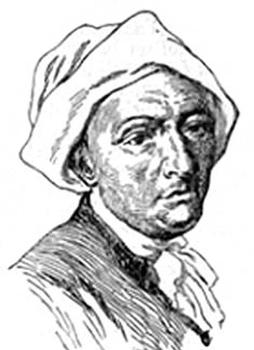Biographical Information
| Name: | Philippe de La Hire |
|---|---|
| Born on | 18 March 1640 in Paris, Ile-de-France, France, Europe |
| Deceased on | 21 April 1718 in Paris, Ile-de-France, France, Europe |
Short biography of Philippe de La Hire
As the eldest son of Laurent de La Hire, artist, professor and founder of the Académie Royale de Peinture et de Sculpture, and pupil of Gérard Desargues (1593–1661), the young Philippe grew up among artists who sought to give their art a theoretical basis and who awakened his interest in painting, drawing, perspective and practical mechanics at an early age. After the death of his father, the devastated Philippe de La Hire went to Venice in 1660 to study art and mathematics for four years. Upon his return, he became friends with Abraham Bosse, Desargues's last student. It was during this period period that La Hire became interested in the theory of conic sections and the cutting of stones, also geodetic and astronomy problems. In 1682 he became the successor to Gilles Personne de Roberval (1602–75) at the chair of mathematics (which had been vacant for seven years) at the Collège Royal. Five years later he succeeded Nicolas François Blondel (1618–86) at the Académie Royale d'Architecture, where he gave lectures on the theory of architecture and the theory of cutting of stones until 1717. Here, La Hire dealt with the problem of masonry arches with a clear interest for the règles de l'art, searching for a scientific basis that would explain the intuition behind the design and building of arches. These aspects, ignored by La Hire in his two Mémoires presented to the Académie des Sciences in 1695 and 1711, have not yet been analysed in their historical context [Becchi & Foce, 2002]. La Hire's masonry arch theory added one of building's most significant objects to the theory of mechanics. He therefore filled in the last piece of the jigsaw in the orientation phase of structural theory and at the same time laid the foundation stone for the application phase.
Main contributions to structural analysis:
Traité de la coupe des pierres [1687–1690]; Remarques sur l'époisseur qu'on doit donner aux pieds droits des voutes et aux murs des dômes ou voutes de four [1692/1912]; Traité de mécanique, où l'on explique tout ce qui est nécessaire dans la pratique des Arts, et les proprietés des corps pesants lesquelles ont eu plus grand usage dans la Physique [1695]; Architecture civile [1698]; Remarques sur la forme de quelques arcs dont on se sert dans l'Architecture [1702/1720]; Sur la construction des voûtes dans les édifices [1712/1731]; Traité de mécanique, où l'on explique tout ce qui est nécessaire dans la pratique des Arts [1730]
Source: Kurrer, Karl-Eugen The History of the Theory of Structures, Wilhelm Ernst & Sohn Verlag für Architektur und technische Wissenschaften GmbH, Berlin (Deutschland), ISBN 3-433-01838-3, 2008; p. 743
Relevant Publications
- (2012): Analysis of Philippe de la Hire's Arch Theory Using Graphic Statics. Presented at: Fourth International Congress on Construction History, Paris, 3-7 July 2012, pp. 367-374.
- (2008): The History of the Theory of Structures. From Arch Analysis to Computational Mechanics. 1st edition, Wilhelm Ernst & Sohn Verlag für Architektur und technische Wissenschaften GmbH, Berlin (Germany), ISBN 978-3-433-01838-5, pp. 848.
- (2018): The History of the Theory of Structures. Searching for Equilibrium. 2nd edition, Wilhelm Ernst & Sohn Verlag für technische Wissenschaften, Berlin (Germany), ISBN 978-3-433-03229-9, pp. 1021.
- About this
data sheet - Person-ID
1009843 - Published on:
20/08/2013 - Last updated on:
22/07/2014




